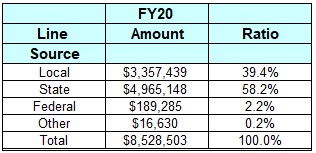Most weeks, this blog post comes out like clockwork. The goal is to have something ready to publish by the end of the day on Wednesday, and with a few exceptions I have been able to meet that goal. Each week, twelve months out of the school year. That's not to say each week I have something earth shattering to share, or even a post that is all that good. The whole point is that I think it is important that the community hear from the superintendent every week. Part of my reasoning is to provide as much transparency as possible to you, and also to share my opinions on a variety of school related topics. Other weeks, I may write a piece that explains how a particular policy proposal may impact our school.
Some weeks I think I have something interesting to say and others are quite a struggle. But what continues to surprise me is that, when I think I have produced a flop, you may have really liked it. The inverse is also true. I may think I've hit a homerun only to learn that my post wasn't all that popular!
Over the course of the last year a lot of the posts in this column have focused on the impact of the pandemic and our response to COVID. It has only been in recent months that some of the topics have begun to shift to what normally 'ebbs and flows' with the school year. But even then, just like a bad penny the pandemic is just below the surface. The good news is the light is at the end of the tunnel and it grows brighter with each passing day. We continue to loosen up restrictions in the district and return to more normalized operations. Another sign of normal came this last weekend when we hosted prom. Although it didn't look like normal I think the students had a great time. We have also announced the return to in person music concerts for the final performances of the year and graduation is right around the corner. I suspect sometime over the summer the school board will rescind the emergency proclamation that was enacted on March 23, 2020. For certain this action will be likely be seen as more symbolic than anything but will no doubt mark an important milestone-and really boost our spirits!
This brings me finally to my point for today. For those who are weekly readers, I am taking a two to three week break from the blog. Don't fret though, it'll be back soon! When this column returns in a few weeks, we'll be on the eve of graduation! I'll look forward to sharing with you my final words of advice to the Class of 2021. We'll talk more about our budgeting process, but with a focus on expenditures. I'll also have plenty of new insights and videos from Jamie Vollmer's Schools Can't Do it Alone network. Finally, I am eager to share with our community members and future employees exactly what it is we are looking for in employees and how our candidate pool is developed. Indeed, a lot to cover beginning this summer!
For now I'm signing off. See you in a few weeks! Oh, and please when you get a chance to be vaccinated I hope you take advantage!
